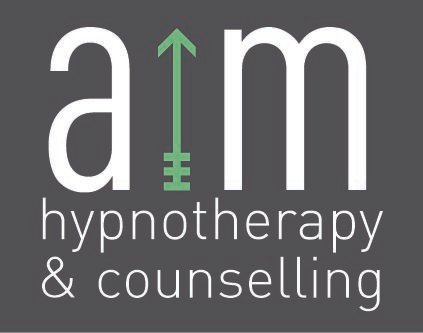What is Depression?
Have you lost interest in many of the activities that used to bring you joy? Do you have trouble sleeping, or are you sleeping too much? Have you lost your appetite or have you been overeating without ever feeling fully satisfied?
Do you feel sad and hopeless, and have these feelings persisted for the majority of your days for at least 2 weeks without letting up?
If you answered yes to these questions you may be suffering from a serious, but treatable mood disorder commonly call depression (National Institute of Mental Health, 2013). Stats Canada estimates that 5.4 % of Canadians have a mood disorders and that one in 8 adults suffer from a mood disorder at some point in their lifetime (Statistics Canada, 2012).
Depression can look and feel differently for everyone and symptoms can vary from mild to severe. Some symptoms like low mood and low energy can be obvious to spot, but other symptoms can be a bit more difficult to identify and can be mislabelled as laziness, boredom or anger issues. While some people who experience low mood or depression continue to maintaining the appearance of their normal day to day lives, others are so debilitated by their low mood and they cannot continue to work or go to school.
Most important to note is that regardless of how functioning someone appears to be, depression can feel devastating and negatively affect their quality of life.
Depression is common, but if it is left unmanaged it can affect all aspects of life. Depression not only affects emotional wellbeing, it also affects the thoughts, behaviours, physical wellness of someone experiencing it as well the lives of those closest to them (National Institute of Mental Health, 2013).
What Causes Depression?
There are many ideas about the cause of depression; it is linked to negative thinking patterns, to genetic predispositions, trauma or negative life experiences, and has also been described as an adaptive emotional state that is part of the human condition.
People who describe it as an adaptive mechanism believe low mood could be our bodies way of alerting us to our unhappiness. They point out that all our bodies emotions are trying to tell us something and that consistent low mood could be our bodies way of trying to inspire change.
Although not all health care professionals describe depression or low mood in the same way, all agree that certain adverse life experiences such as difficult childhoods, illness, conflict, death of loved ones, major life changes, divorce, changes to housing, trauma, addiction and isolation put people at a greater risk of developing depression (Webmd, 2018).
For most people, symptoms of depression are likely caused by a combination and interplay of lifestyle, diet, past experiences and the perceptions of control and opportunities for change.
If you are reading this and believe you are experiencing depression, you likely have some hope for change even if it feels quite small at the moment. I assume this because you are curious enough to search for some answers.
My hope is that therapy can help grow that feeling hope no matter how small it may be, and that through a supportive therapeutic relationship you may begin to build a more meaningful life for yourself.
Approaches that can help symptoms of depression
There are many different perspectives on the cause of depression and treatments. At Aim we believe in using a combination of approaches depending on client’s personal values and life experiences.
Below are short descriptions of the theoretical orientations that influence our therapeutic approach.
Cognitive Behavioral Therapy (CBT)
Cognitive Behavioural Therapy is theoretical approach that has rapidly grown in popularity and allows for the addition of self-help interventions such as workbooks and apps. Some believe the popularity of CBT is largely because of its ability to be standardized, which means it can be administered the same way each time, allowing it to be more easily analyzed in scientific studies.
CBT looks at the interaction of our thoughts, emotions and behaviours by initially addressing automatic thoughts. This idea believes we all create filters through which we understand ourselves and the world.
We all have automatic thoughts, and sometimes these thoughts can be rather short sighted, black and white or catastrophic. Our mind has evolved over generations to protect us from harm, it makes sense for us to expect the worst, especially if we’ve had previous negative experiences (Jarrett & Ruch, 1994). This perspective sees our patterns of thought as a way of changing our mood and disposition. CBT highlights rigid and unhelpful thinking patterns in order to create more balanced and realistic thoughts leading to behavioural change and changes in emotional wellbeing.
CBT believes that every experience we have influences our filter and our perception of ourselves which influences our thinking styles. Our filters can be helpful to make sense of ourselves and our surroundings, but they can also become faulty, like funhouse mirrors, causing us to view our experiences and ourselves less rationally (Mayo Clinic, 2016).
Humanistic & Person-Centered
A Person-Centered approach believes that a therapeutic alliance built on mutual respect and empathy are the cornerstone of therapeutic work. This approach believes in providing support to empower clients to make the changes they would like for themselves. From a humanistic perspective depression may because of deep social connection and discouragement. This perspective aims to remain in the here and now experience of the client and to allow them to experience deep empathy and understanding through deep listening. They believe much of human suffering comes from a lack of deep connection, not feeling heard, understood and accepted by others. This approach believes gaining self-acceptance through the acceptance of a trusting and empathetic relationship will allow the empowerment and encouragement needed to create positive change (Schneider & Pierson, 2015).
Psychoanalysis & Subconscious Awareness
A psychoanalytical perspective on depression is that it differs from sadness in that sadness has a specific cause, but the cause of depression is usually vague and longer lasting. This view believes the role of therapy is to help clients gain deeper understanding of the hidden reasons for their unhappiness. According to the psychoanalytic approach the reason for depression may be hidden because our minds tend to supressed or forgotten especially painful emotions to protect us from overwhelm or because some aspect of us felt helpless in addressing or changing our circumstances. This approach aims to uncover the reasons for the discomfort in a safe and supportive environment in order to allow a healthy level of grief for the sadness and loss which may have been ignored or overlooked. Psychoanalysis can use talk therapy or subconscious work to uncover and better understand the root cause of depression (Mayo Clinic, 2016)
Sensorimotor Psychotherapy
Sensorimotor psychotherapy addresses physical, emotional and mental states to gently relieve physical legacy of traumatic experiences. This approach sees our bodies as the keepers of our past experiences and believes our muscles and nervous system reacts in specific ways when we feel unsafe. This perspective believes our survival response of fight, freeze or flight can become ‘stuck’ in our bodies long after the trauma has passed and that certain seemingly unrelated situations can trigger this response.
The sensorimotor approach aims to notice the held physical response in order to gently move it into noticing sensations of safety.
Many of these approaches described depression as connected to strategies for self-protection that are no longer helpful. There strategies may be subconsciously developed in the past and could be causing unhappiness. These strategies may have initially developed as a way of alleviating pain either through negative thinking and lowered expectations, denial and dissociation of needs.
The problem is that denying needs and ignoring pain can only work for so long before it shows up as a seemingly unrelated symptom.
Being overly protective of ourselves and vigilant towards life robs us of feeling at ease and the joy that comes with trusting others and our surroundings.
This is especially frustrating when we know we are objectively safe enough to let down our guard or when we pine for connection but feel unable to achieve it.
The objective of Aim’s therapeutic intervention is to ultimately help clients gain the insights and self-compassion we believe are necessary for growth and change. We hope to allow clients to acknowledge their pain, their attempts at self-protection and reimagine new ways of coping and having their needs met.
Therapy should help clients create realistic and accurate understanding of themselves and their circumstances; to help build trust and healthy balance between openness and self-preservation.
Being open to life exposes us to both joy and disappointment. Through a supportive therapeutic alliance, we aim to build tolerance and acceptance of the highs and lows that are part of the human experience.
Through this understanding we hope to help clients bring more joy and aliveness into their daily experiences.
At Aim Hypnotherapy & Counselling, our approach to treating depression is based on scientific research and practical expertise. Our approach in grounded in theory and utilizes empirically supported interventions such as CBT, Sensorimotor Psychotherapy, Mindfulness, EMDR and Hypnotherapy.
If you are ready to see how this approach can help you or have any questions please contact us for more information.
References
Good Therapy https://www.goodtherapy.org/learn-about-therapy/types/sensorimotor-psychology
Mayo Clinic staff. (2016, March 17). Psychotherapy: What you can expect
mayoclinic.org/tests-procedures/psychotherapy/details/what-you-can-expect/rec-20197200
Mayo Clinic Staff. (2016, February 23). Cognitive behavioral therapy
mayoclinic.org/tests-procedures/cognitive-behavioral-therapy/home/ovc-20186868
National Institute of Mental Health (2013). Eating Disorders. Retrieved August 20, 2018, from https://www.nimh.nih.gov/health/publications/depression/index.shtml
Schneider, K. J., Pierson, J. F., & Bugental, J. F. T. (Eds.). (2015). The handbook of humanistic psychology: Theory, research, and practice (2nd ed.). Sage Publications, Inc.
Understanding psychotherapy and how it works. (n.d.) apa.org/helpcenter/understanding-psychotherapy.aspx
WebMD. Depression.Retrieved August 20. 2018 from https://www.webmd.com/depression/guide/causes-depression#3

